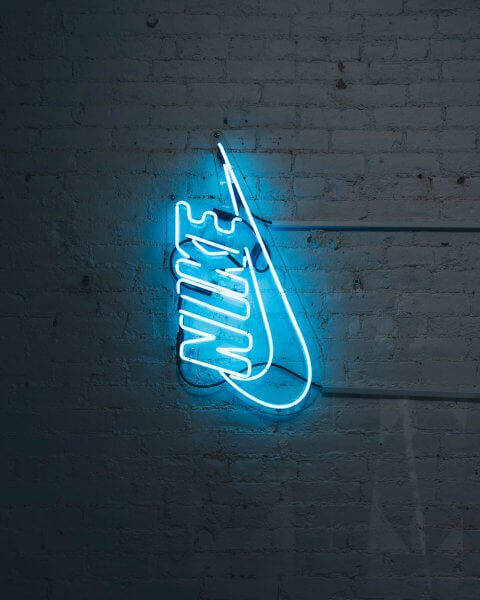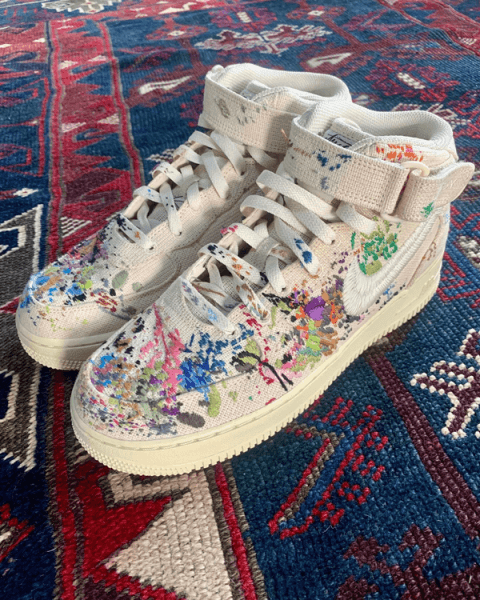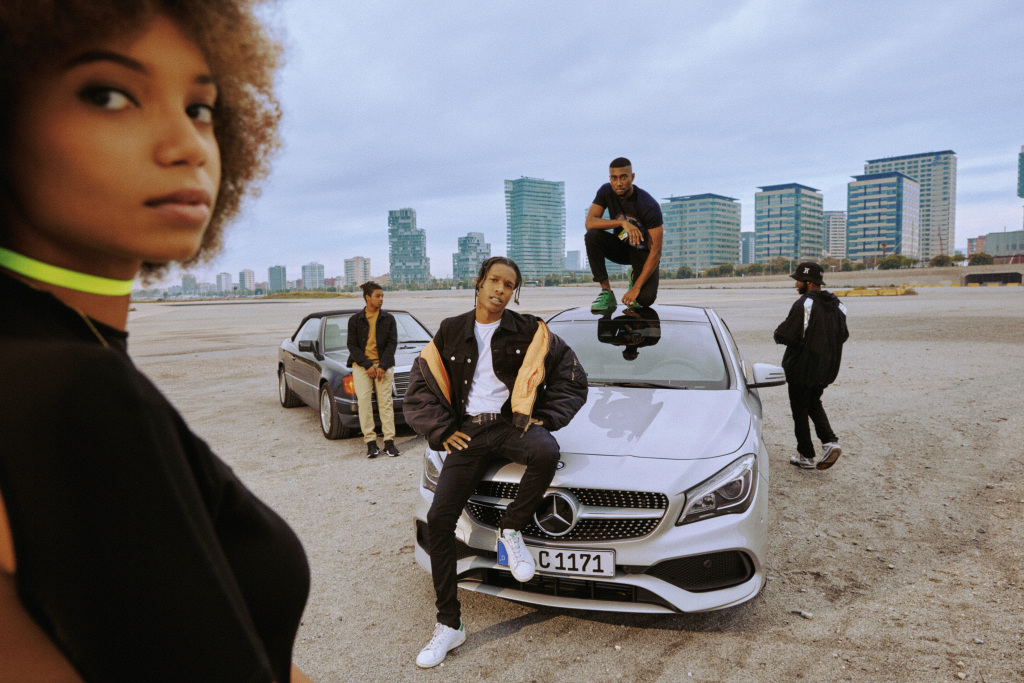
Case Study
How Mercedes-Benz got it all right
2001. Somewhere in Harlem, NYC.
A narrow-shouldered boy with cornrows slowly creeps along a dark apartment hallway towards the kitchen. Illuminated by the daylight shining through the window, a young man sits at the kitchentable – and from somewhere this hypnotic knocking drones: Boom Boom Bap, Boom Bo Boom Bap. As the boy moves on it is getting louder and louder. A$AP Rocky begins to tell the story of his life…
“When I was growing up, there was this beat stuck in my head.”
The young man at the kitchen table bangs his fists on the wood. He nods to the beat as if in ecstasy. Boom Boom Bap, Boom Bo Boom Bap. The colorful Fruit Loops shake to the beat in the milk. Cut. Rocky’ reminiscing:
“No Matter what, I can never really get it out.”
And it goes Boom Boom Bap, Boom Bo Boom Bap. Until the screen goes black.
Silence…
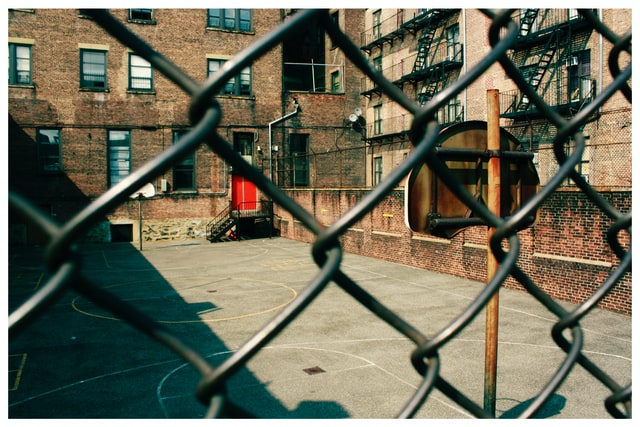 Photo: Bertrand Colombo/unsplash
Photo: Bertrand Colombo/unsplash
What starts out so promisingly proofs to be a masterful staging of a familiar motif in just 2:25: the narrative of the American dream. With gloomy, almost oppressive atmosphere at the beginning, a clever resolution at the end and a universal, motivating message to all who have goals in life and hurdles to overcome. Even when circumstances are adverse. Listen to your gut, believe in yourself and you can achieve anything.
It’s the episode “Get a Job.”, one of five shorts from the landmark 2017 Mercedes-Benz “Grow up” campaign. It features rap artist and style icon A$AP Rocky. He is telling the true story of himself to his older brother, whose tragic death miraculously became a fateful turning point in Rocky’s life. The clip showcases the hiphop version of the Amercian dream, where the protagonist has to start the game with a deficit and overcomes it with self-confidence and creativity.
Although “Get a Job.” is a commercial, it doesn’t feel like a one. Cars from Mercedes-Benz only register subliminally. That’s exactly what makes the campaign: for the first time, Mercedes-Benz did not focus on the car, but on the customer.
“Get a Job.” appeals to new target groups, especially the infamous Generation Y, by cracking the cultural code of its predominant youth culture. Rarely has a brand so credibly showcased its connection to hiphop without overstraining cultural clichées or sucking up to the youth. Quite contrary hiphop blends into the background story naturally without claiming to be hiphop by hook or by crook. It’s just a given part of Rocky’s life. No doubt. As Mercedes-Benz is. That’s what makes “Get a Job” so credible.
A major move at the right time in an automotive market that is undergoing major upheaval.
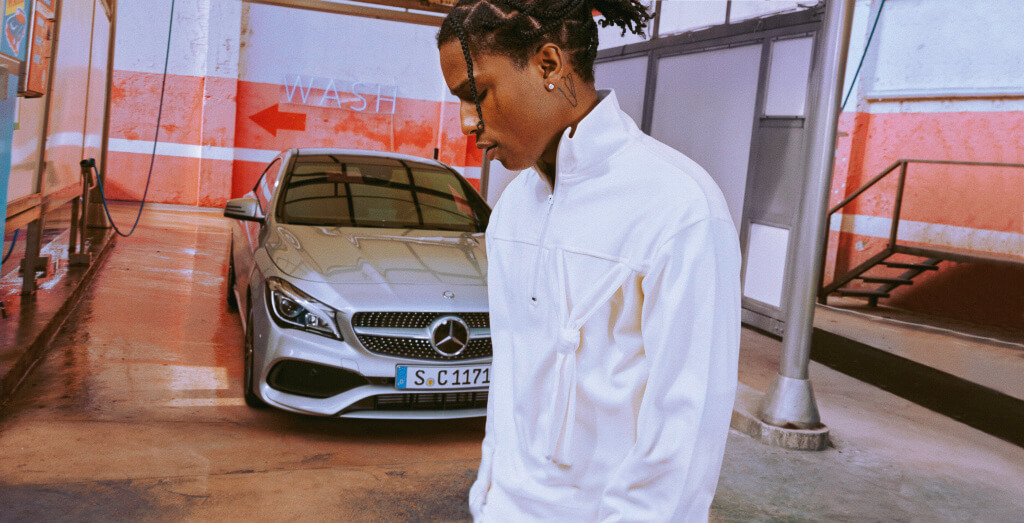 © Mercedes-Benz
© Mercedes-Benz 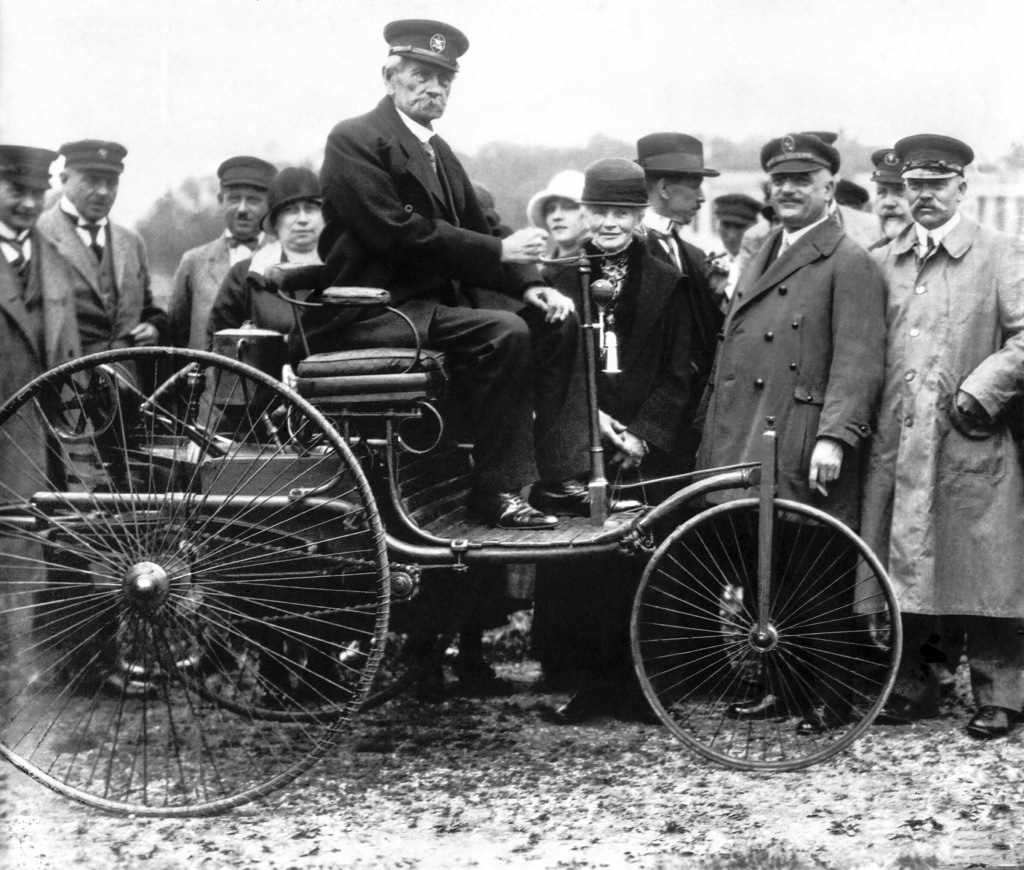
What does that tell us?
This is how we take
The old from the new
the new to the old
the old from the new
It was a radical turnaround in its brand communication that Mercedes-Benz accomplished with “Grow Up”. If you want to understand why, you first have to go back. Way back. To the summer of 1886, to be precise. The birth of the automobile.
It is only six months after Carl Benz applied for a patent for his “vehicle with gas engine operation” when the newspapers report on a special curiosity: the first public outing of the three-wheeled Benz Patent Motor Car, Type 1 – the first automobile. What no one knows at the time: it will fundamentally change the world.
No other car brand has as much tradition as Mercedes-Benz. Individual mobility as we know it would be inconceivable without it. They are still drawing on this heritage today, which is both a blessing and a curse. After all, technological progress and the climate crisis have fundamentally changed the general conditions. The automotive industry is in the midst of an epochal upheaval. What was right for more than 130 years is increasingly losing its validity. Values are changing, customers are changing their buying behavior, new technologies are replacing old ones.
“We will probably change the car more in the next ten to fifteen years than in the previous 130 years.“
Gorden Wagener,
Daimler Chief Design Officer
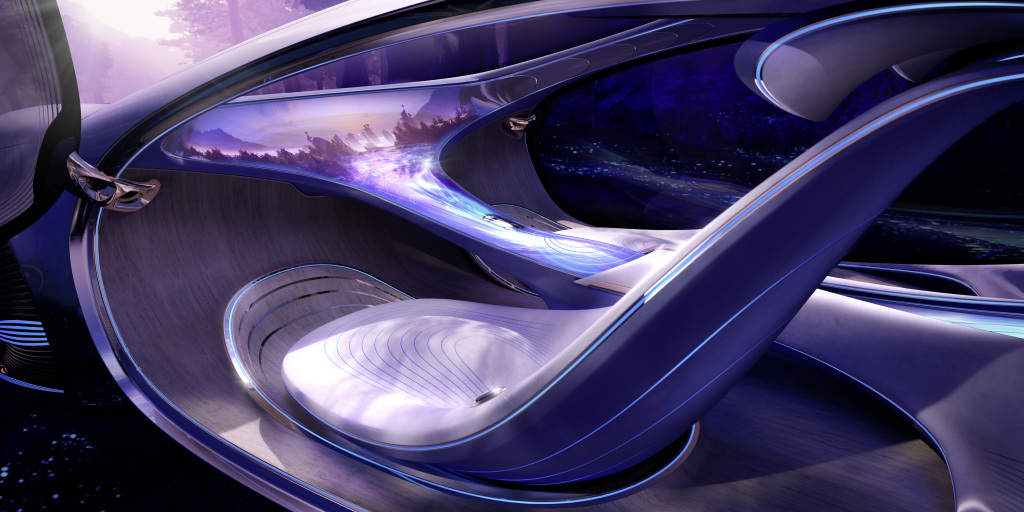 © Mercedes-Benz
© Mercedes-BenzNew Perception
of Status Symbols
The perception of status symbols such as expensive cars as an expression of success has already undergone a massive change among the future-relevant buyer groups. Old luxury is out. There is a clear trend towards goods and services that stand for overriding values: Individuality, sustainability, mindfulness and meaning. Increasingly, it’s about purpose instead of profit. More and more consumers are expressing with their purchasing decisions that they are particularly mindful, environmentally aware or free. Above all, however, that they are not elitist, but contribute something to social progress or the preservation of this planet. New Luxury.
Mercedes-Benz still enjoys the reputation of being particularly reliable, safe and comfortable. But the tide has begun to turn. Others stand for the future. First and foremost Tesla. And for good reason. While the automotive industry was primarily defined by its hardware for more than 130 years, the focus is now shifting to entirely new features.
Technological progress is opening up a much larger playing field. Elon Musk understands this. He thinks of his company differently from the ground up. Tesla is a holistically positioned high-tech powerhouse. The car is just one of several products in the company’s portfolio. It offers its customers much more than that: a complete ecosystem of forward-looking services related to new mobility. This has far-reaching consequences. What Carl Benz and Gottfried Daimler were at the end of the 19th century, Elon Musk could be tomorrow: one of the greatest innovators of our time. Those who rest on old laurels and fail to shape change risk being left behind.
So, what is there to do?
“We are moving from product-centric to customer-centric in our communications. We think from thecustomer’s point of view, continuously scrutinize measures and commitments critically, and create a culture of materiality and clarity. This is how we have re-sharpened our brand positioning.”
Bettina Fetzer,
Vice President Marketing Mercedes-Benz Cars
Revolution from above?
In 2016, then Daimler CEO Dietmar Zetsche demonstratively took to the stage of the Paris Motor Show in sneakers and announced “a revolution from above,” as the Süddeutsche Zeitung wrote. His message: We don’t belong to the old iron. Quite the opposite. His plan: to transform the flagship of the German auto industry into a modern tech company in the style of Tesla. From now on, the company wanted to rethink the transformation from the customer’s perspective.
The brands that survive are those that keep their finger on the pulse and inspire future buyers. The challenge: revitalize the Merceds-Benz brand, create an emotional bond, commitment and loyalty. Build on the things that can’t be invented as quickly as an electric runabout – brand, history, heritage – and transport them into the here and now from the perspective of tomorrow’s customers.
Mercedes-Benz should become a love brand among the young again. A modern brand that not only understands and embraces the spirit of the times, but also embodies it in a credible way. A brand with whose goals and values one identifies.

WHAT DOES THAT HAVE TO DO WITH HIPHOP?
From rags to riches. That’s what hiphop is all about.
Luxury goods such as strictly limited sneakers, expensive jewelry, or premium-class cars represent the striving for social advancement that is deeply inscribed in the soul of hiphop culture. To display them offensively as symbols of success is ultimately an act of self-empowerment in a society in which opportunities for advancement are heavily dependent on social affiliation and financial means. Make something out of nothing and be proud of it.
Mercedes-Benz, together with lead agency Antoni, masterfully staged the motif in its 2017 “Grow up” compact car campaign. It was not only the most extensive content production in the brand’s history, but also the most unconventional to date.
By focusing on the cultural meaning of the brand Mercedes-Benz instead of the car’s technical specifications, the campaign reminds young customers why you would be interested in owning a Mercedes. It’s something you dreamed about when you were young. You have grown up by now. You deserve one. It’s a symbol of your ambition and your achievements.
Most mentioned car brands in rap songs
- Mercedes 1,998
- BMW 1,162
- Ferrari 844
- Cadillac 825
- Lamborghini 757
- Chevrolet 643
- Lexus 529
- Bentley 448
- Maserati 446
- Honda 436
- Porsche 434
- Land Rover 422
- Jeep 384
- Jaguar 361
- Audi 222
- Rolls-Royce 213
- Buick 194
- McLaren 185
- Tesla 179
- Nissan 176
- Toyota 175
- Ford 154
- Volvo 154
Source: Most Mentioned Vehicles in Rap and Hip-Hop Songs. Car and Driver, 2019 https://www.caranddriver.com/features/g26087850/cars-in-rap-hip-hop-songs-music, 2019
ROCKY’S STORY
Surprisingly raw and uncompromising, Swedish director Gustav Johansson interpreted the experiences of an entire generation in five short films instead of the usual opulent TV spot. They were shown on YouTube and on a dedicated microsite. This broke with conventional expectations. As did the sensitive, honest fashion shots by the young French photographer Alice Moité. In addition, more than 100 short moving image sequences tailored to social media were created to share.
Within 2:25 minutes A§AP Rocky tells the audience the story of his eventful life.
“I guess when you’re young, you can be anything you ever wanna choose. But as you got older, all those options are going to narrow. And before you know it, every choice you make comes with a consequence. And whenever the shit got ruff, this beat was always there.”
“But for one day, the beat just stopped.“
A$AP Rocky’s life races by. Suddenly, silence.
Empty chairs in the dark kitchen. The guy from the beginning is gone. Instead we see Rocky, who stares at the floor apathetically shaking his head. A man lies dead on the ground of a parking lot. Somewhere at nighttime. It’s Rocky’s older brother, who got shot when Rocky was 13 years old.
Making something
out of nothing
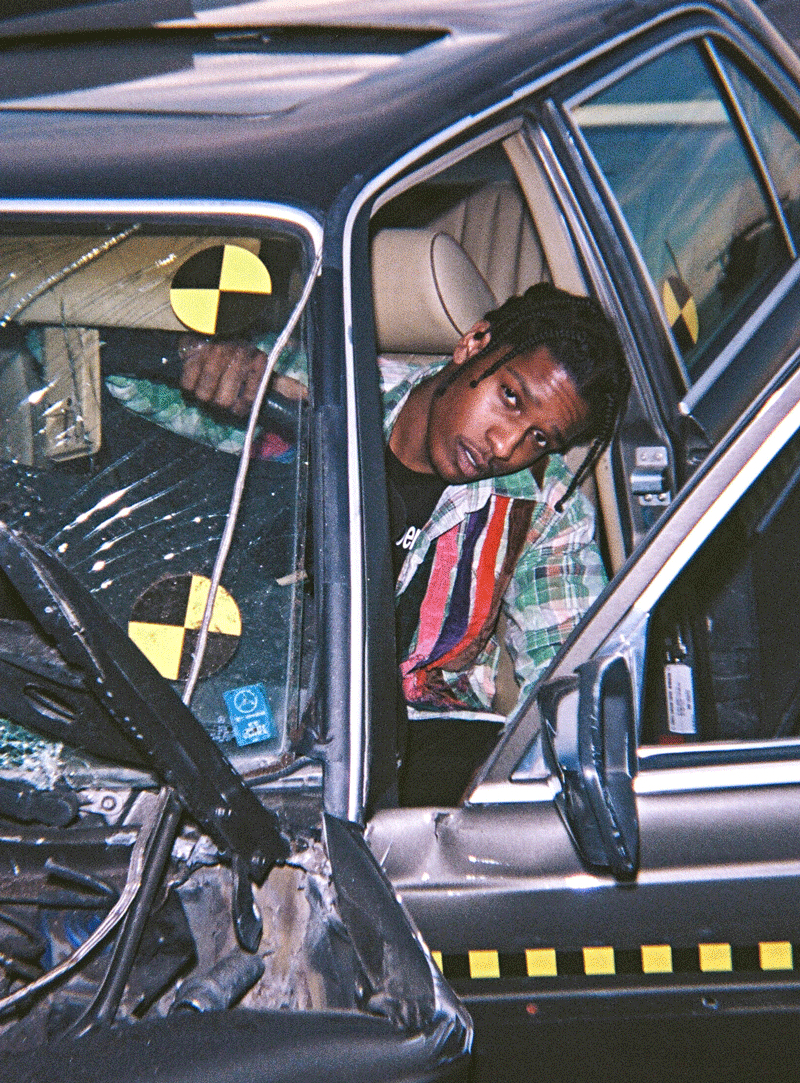
“My brother moved on, but… The beat came back!”
Nighttime. Only the wind can be heard rushing through the deep canyons of buildings. And Rocky’s heels. He strides along the same rooftop parking lot his brother got shot when he was thirteen. At his side there’s the young boy from the beginning.
In the back: a white Benz. Cut. Rocky slams the door. We hear the nice sound that only the door of a Benz makes when it is closed. And suddenly, there’s this beat again:
BOOM BOOM BAP BOOM BO BOOM BAP
It’s the turning point for the good. Rocky’s life now: fame and luxury, screaming fans, sold out concerts. It was the death of his brother that motivated Rocky to keep going, To grow up and get a job.
WHAT HAPPENS WHEN THE BEAT HITS YOU…
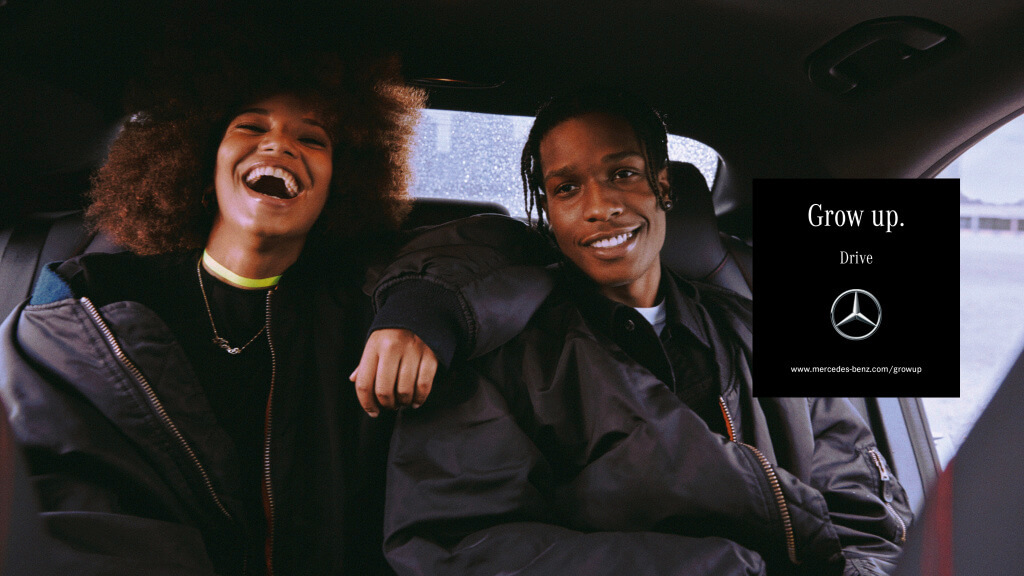
Got a Job.
The film chronicles “modern adulthood”, high hurdles, strokes of fate and fundamental decisions that one has to make in life: Where do I want to go? How do I want to live? Universal questions that everyone in the targeted age group knows all too well.
With “Get a Job.”, Mercedes-Benz succeeded in reconciling brand and culture in such a credible and fresh way as it is rarely seen. Without any gimmicks. Simply by telling an authentic story that includes goals and values as well as imagery and cultural codes that hit the zeitgeist.
When hiphop began its triumphal march in the early 1970s, forefather Kool DJ Herc & Co. were playing block parties in the Bronx with minimal equipment. Today, the influence of hiphop is omnipresent. Whether music, fashion, sports or politics. Hiphop is the most influential pop cultural trend of the past 30 years. Three generations have already been shaped by its influence: X, Y and perhaps more than ever, Generation Z. These are the generations that brands should be trying to attract today if they want to successfully market their products and services to men and women tomorrow. Many brands are trying to take advantage of this. Only a few succeed. Mercedes-Benz hit the nail on the head with “Grow Up”.
Sources:
- https://www.mercedes-benz.com/de/lifestyle/grow-up-geschichten-einer-neuen-generation/
- https://media.daimler.com/marsMediaSite/de/instance/ko/SXSW-2019-Gorden-Wagener-und-AAP-Rocky-im-Livetalk—Die-Zukunft-ist-ungeschrieben–wir-koennen-sie-gestalten.xhtml?oid=42796791
- https://www.wuv.de/marketing/neue_bildsprache_mercedes_und_die_kampagne_grow_up
- https://antoni.de/case/grow-up/
- https://www.new-business.de/kommunikation/detail.php?nr=716361&rubric=KOMMUNIKATION
- https://www.highsnobiety.com/p/mercedes-benz-asap-rocky-grow-up/
- https://www.sueddeutsche.de/auto/die-zukunft-von-daimler-dieter-zetsche-beschwoert-den-wandel-der-autobranche-1.3193256
- https://www.sueddeutsche.de/wirtschaft/sz-wirtschaftsgipfel-bmw-chef-autoindustrie-steht-vor-groesstem-umbruch-aller-zeiten-1.3753594
- https://www.manager-magazin.de/unternehmen/autoindustrie/disruption-radar-von-roland-berger-autoindustrie-im-umbruch-a-1144503.html
- https://www.mckinsey.de/files/170610-supplier-aftermarket.pdf
- https://www.businessinsider.de/leben/selbstoptimierung/statussymbole-wie-autos-und-teurer-schmuck-sterben-r/
- https://media.daimler.com/marsMediaSite/de/instance/ko/SXSW-2019-Gorden-Wagener-und-AAP-Rocky-im-Livetalk—Die-Zukunft-ist-ungeschrieben–wir-koennen-sie-gestalten.xhtml?oid=42796791
- https://www.absatzwirtschaft.de/mercedes-marketingchefin-fetzer-wir-sind-social-media-pioniere-169224/
- https://www.caranddriver.com/features/g26087850/cars-in-rap-hip-hop-songs-music/
- https://www.wuv.de/marketing/neue_bildsprache_mercedes_und_die_kampagne_grow_up
- https://www.horizont.net/marketing/kommentare/Grow-up-Kampagne-Starkes-Mercedes-Understatement-mit-Schoenheitsfehlern-156492

